News
The Future We Can Envision from Cultured Meat Updated in April 2020
Deciding what to eat has always been an indispensable part of life, alongside choosing where to live or where to sleep. As such, technology related to food has always been an important factor in human society. Food-related technologies, consequently, are constantly being improved.
Of particular interest in recent years is the “cultured meat” or lab-grown meat technology. Cells taken from livestock are fed and nurtured in a bioreactor, where they multiply to produce edible meat. From a relevant session at Science Agora 2019 held in Odaiba, Tokyo, we were able to learn how to embrace this new technology.
Cultured Meat can Bring Hope to the Food Industry
The first place to go was the Forum titled “Learn! Discuss! Cultured Meat—Our Future Food” organized to spark discussion on food for our future society.
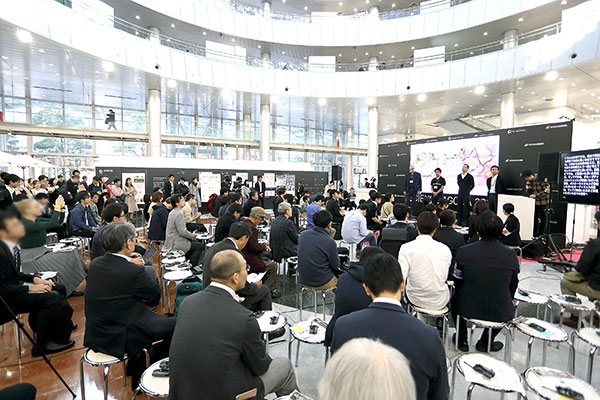
The first keynote speaker was Dr. Mark Post from Maastricht University. In 2013, he held the first tasting of the “Cultured Meat Burger” and is known as a global authority in this field. At the beginning, Dr. Post predicted that the world population will reach 10 billion by 2050, and that demand for high-quality protein will increase dramatically.
By creating muscle tissues from a single stem cell, he explained that cultured meat technology could reduce production costs and environmental impact. But he also pointed out that “in order to avoid danger, human beings have this natural instinct not to eat unfamiliar things.” So for cultured meat to be accepted by society, we have to help people overcome their fear and aversion to unfamiliar food.
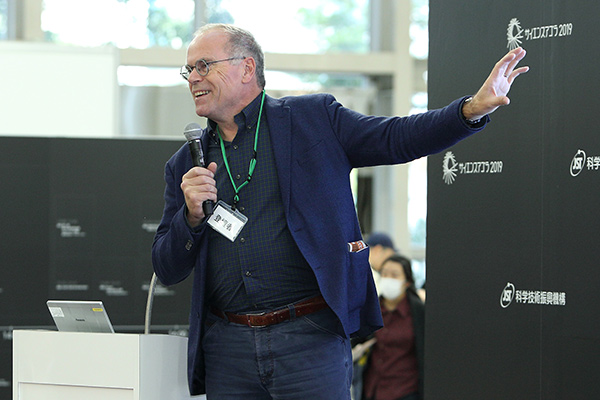
Following Dr. Post, three experts discussed topics on future food, focusing on lab-grown meat. The first was Mr. Komasa Mizuki, an investor and representative of RealTech Fund who emphasized that outer space would certainly be one of the places needing cultured meat. In light of recent technological developments, human habitation may begin on the moon as soon as 2030. Mr. Komasa said that in such extraterrestrial environments where supplies and space are limited, there will be a need for cultured meat that can be produced under restricted resources.
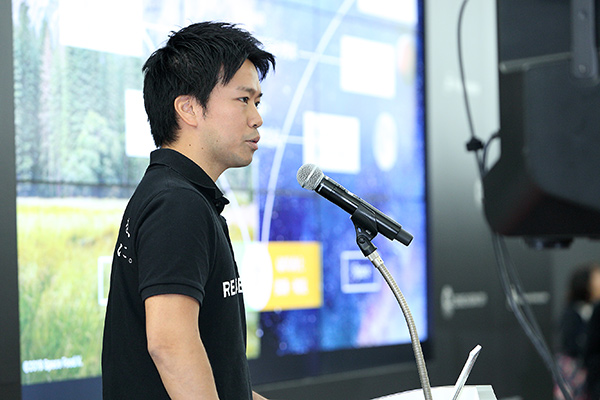
Next came Professor Okada Eizo of Kyoto Sangyo University. From a designer’s point of view, Prof. Okada stated that when depicting future culture, “it’s important to consider things that are easy to change and things that are hard to change.” He said that we could find some hints in foods like ramen and okonomiyaki. Both of these soul foods are familiar to Japanese people. Since the early 20th century, both have emerged from food stalls. While countless gourmet dishes are offered nowadays, old-fashioned stalls still thrive. Mr. Okada posed the question to the audience, “What would be our future if all things provided to us are completely new?”
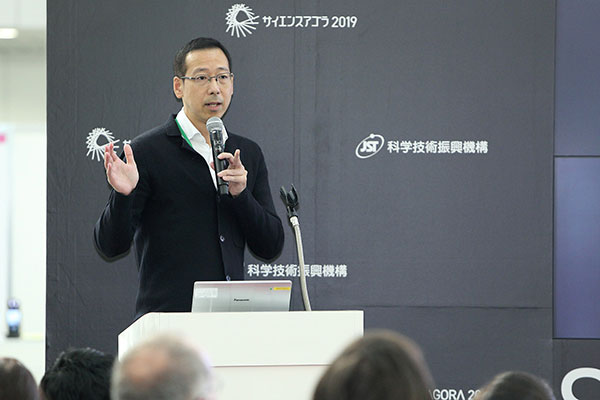
The microphone was then passed to Prof. Ishikawa Shinichi of Miyagi University School of Food, Agricultural and Environmental Sciences. Prof. Ishikawa challenged the audience to imagine the future using famous frameworks from the past. For example, take “Momotaro,” the classic Japanese fable. A dog, a monkey, and a pheasant each receive a dumpling from Momotaro in exchange for loyalty. Now, imagine this story set in the future: each animal would get a custom-made dumpling crafted by a 3D food printer!
While these technologies will enable a perfect meal that includes all vital nutrients in one sitting, “it is also human nature to seek variety in our daily diet.” He called on the audience: “I want you to think about what kind of meals our future will require.”
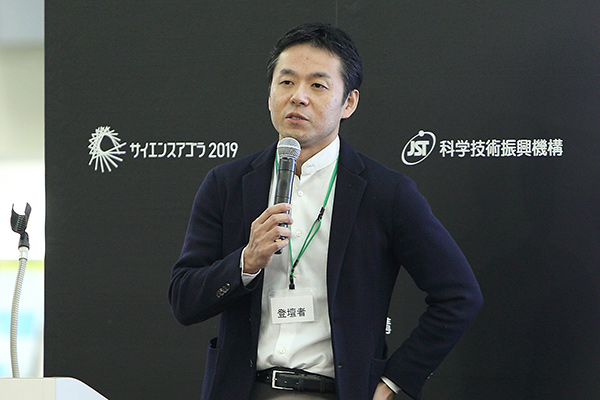
After the talks by the experts, groups including elementary and junior high school students discussed what they want in cultured meat. One said, “I want you to develop something delicious and nutritious," while another wished for “cultured meat that could be eaten by people with allergies.”
Certainly, standards for taste and safety will not differ from those for existing meat. The commercial value of cultured meat could be enhanced by adding other beneficial properties, as in functional foods. Also, as Prof. Okada pointed out, imagining the coming food culture should be effective in promoting cultured meat.
So, what kind of R&D is currently underway? In order to understand the ongoing situation, we headed for the symposium “Future Food Production - the Forefront of Cultured Meat Development”, co-hosted by the Cultured Food Research Society and Japan Science and Technology Agency (JST).
Japan’s Position in Cultured Meat Research
JST runs multiple projects to create better future society. One of its agendas centers on the creation of innovative food production technologies that can respond to future environmental changes. This symposium proposed new discussion topics from researchers along with a panel discussion to think about ways to implement these technologies at scale. There were many participants from industry and media, suggesting a high level of interest.
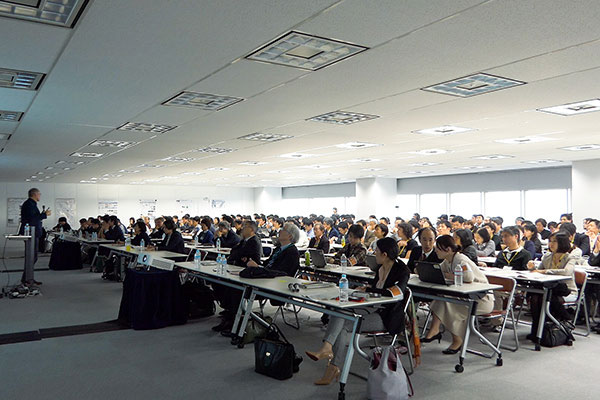
As a sequel to his presentation in the morning, Prof. Mark Post delivered another keynote address, stating that “Japan is one of the few countries that publicly invests in cultured meat technology.” He hoped that Japan could play a leading role in its R&D.
Then he explained the current situation in detail. The science of tissue engineering becomes important when making cultured meat at scale. There are three factors to its development and ultimate market success. First, cells─the “raw materials” for cultured meat. Next, “Biomaterials” are needed grow those cell cultures efficiently. And finally, “control factors” differentiate the expanded cells into lean parts or parts marbled with fat (which makes for a smoother taste). These three factors will ultimately influence consumers’ decisions because they influence the appearance and flavor of the cultured meat. Prof. Post also mentioned iPS cells (artificial pluripotent stem cells), regenerative medicine from Japan, as an example of “cells.” The production cost of iPS cells is relatively low, and a method for changing them into muscle cells already exists. Because the production involves genetic manipulation, using edible meat as raw material is a high hurdle, but iPS cells are actually being used for basic research on cultured meat.
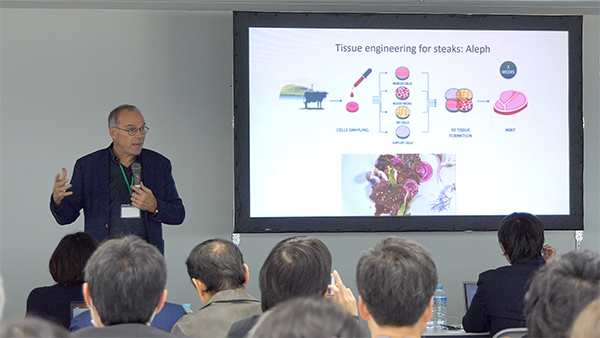
The afternoon keynote was followed by presentations by four researchers who are currently working on JST-funded projects. Professor Akazawa Chihiro, Tokyo Medical and Dental University talked about the production of cultured meat using organoids made from stem cells. Organoids can be thought of as artificial body tissues that reconstruct multiple cells to mimic organs. Prof. Akazawa and his team aim to establish a technology that can differentiate these organoids in various ways, and selectively and continuously produce specific meat parts like lean red meat or marbled fat (to create high-end “shimofuri” meat).
Prof. Shimizu Tatsuya at Tokyo Women's Medical University explained his research on “culture medium,” which is indispensable for producing cultured meat. Many components of the culture solution are derived from plants and fermented products. As a result, their production is as susceptible to climate and environmental change as livestock. Prof. Shimizu and his colleagues want to use algae for cell culture because of its similarity to plants. Experiments have confirmed that animal cells can use algae extract to grow. In the future, they plan to pursue multiple studies for the practical application of this production system, including the search for optimal culture conditions.
“For lab-grown meat to be accepted by society, it’s really important to create cultured meat with real muscle morphology, color, and function,” said Prof. Takeuchi Shoji from the University of Tokyo. He said that it is already possible to grow—into a thickness of one centimeter or so—tissues with a fibrous structure similar to real muscle. In the future, his team plans to improve the tissue so that it can support ingredients for blood that give meat its red color, or to mature its tissue so that it will respond to electrical stimuli. The team’s ultimate goal is to create a steak-shaped piece of meat in line with what everyone pictures when they think of steak.
Prof. Matsuzaki Michiya of Osaka University is conducting research on automatic production technology for cultured meat. He stressed that “When considering the marketing of cultured meat, it is important to have a system that guarantees stable, hygienic production.” Prof. Matsuzaki is trying to artificially create cell tissue using an inkjet printer. Specifically, his team is attempting to reproduce the laminate structure found in actual muscles and blood vessels by repetitively discharging cells with processed surfaces.
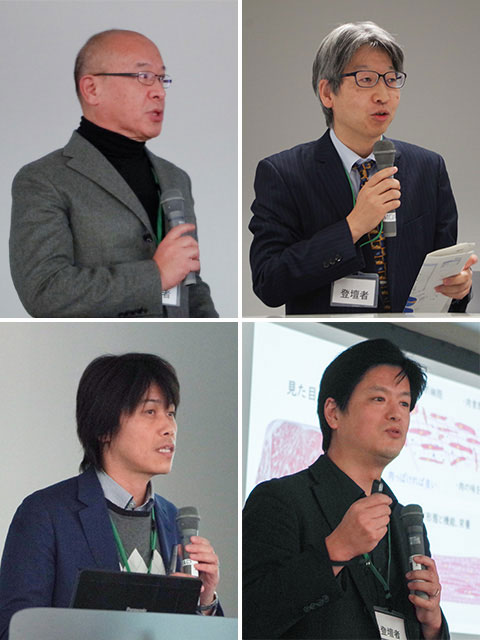
What’s Needed to Bring Cultured Meat to the World
In a panel discussion following the presentations, moderator Prof. Kinooka Masahiro of Osaka University and five panelists gathered upfront. At the beginning, Prof. Kinooka asked panelists how to go about bringing cultured meat to the real world in a big way: “Currently, there is no custom to eat meat grown in the lab─What can we do to spark interest in actually consuming cultured meat?”
Dr. Igarashi Keisuke, President of the Cellular Agriculture Institute of the Commons, emphasized the importance of education and human resource development: “In order for people to decide whether they are actually okay with eating cultured meat, they need to understand the technology behind it─under what kind of technology the meat was made.” He mentioned the possibility of using lab-grown meat as a school discussion topic in food education.
Mr. Komasa Mizuki, who also appeared in the morning session, predicted that, from an investor's perspective, “consumption will actually be bolstered by strong consumer needs.” He pointed out that “the desire to eat cultured meat may well surpass any negative feelings people have about it.” He reminded everyone that meat consumption is still a large component of food culture in Japan.
Mr. Tanaka Hirotaka, representative from Smart Kitchen Summit Japan, discussed the need for a two-pronged approach, based on food culture and our environment. “Reasons for eating food are now being tied to happy lives and connection among people.” He pointed out that we need to account for that human drive to seek variety in food.
From an industrial point of view, Mr. Nakamura Futoshi of Nissin Foods Holdings Co. warned that “it is not desirable for livestock farmers and people involved in meat production to compete with cultured meat. It is necessary to create new business through cooperation.”
Referring to a consumer survey, Prof. Hibino Aiko, specializing in sociology at Hirosaki University, pointed out that “people who connected this new technology to science fiction responded favorably to cultured meat.” She added, “even if they hadn't seen such meat before, respondents thought about trying cultured meat if it were presented to them in a familiar manner.” With that in mind, she concluded that “meeting the needs of smaller groups would be a good first step in spreading the word about cultured meat.”
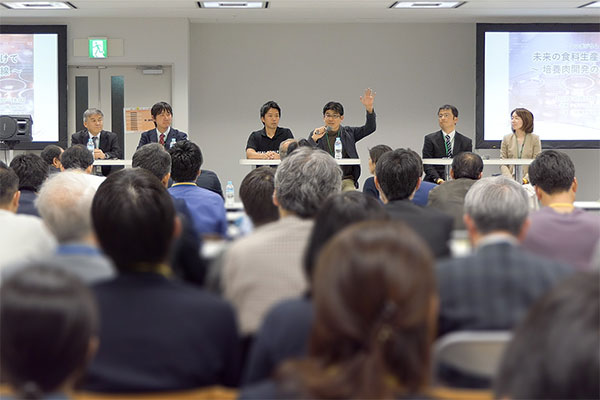
After the interview, I felt again that the study of cultured meat was extremely interdisciplinary. Knowledge of basic biology such as cell culture is essential to develop this technology. An engineering perspective is indispensable for mass-producing safe products affordably. And in order to establish a distribution network and a connection to consumers, expertise in sociology and the humanities is required. Although a research system that integrates this wide range of fields has only just begun to come together, I want to keep an eye on the future results and see how people end up taking to cultured meat.
Muroi Hirohito
Science Writer







